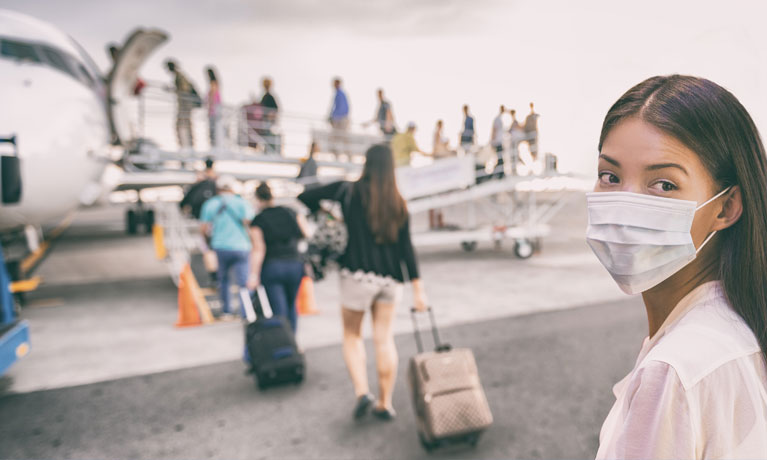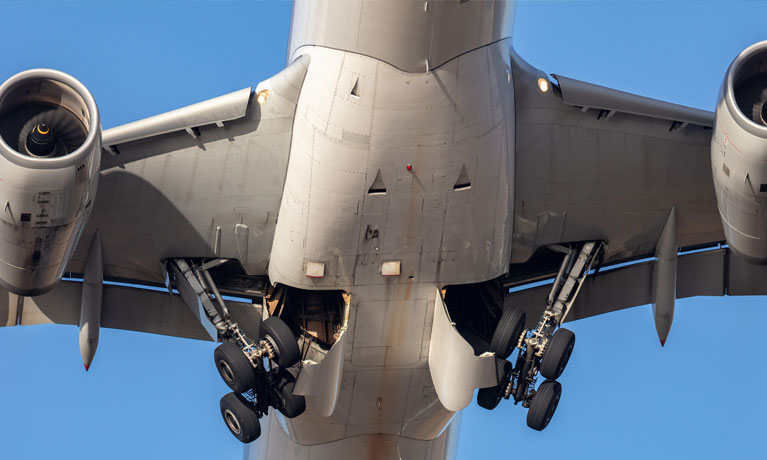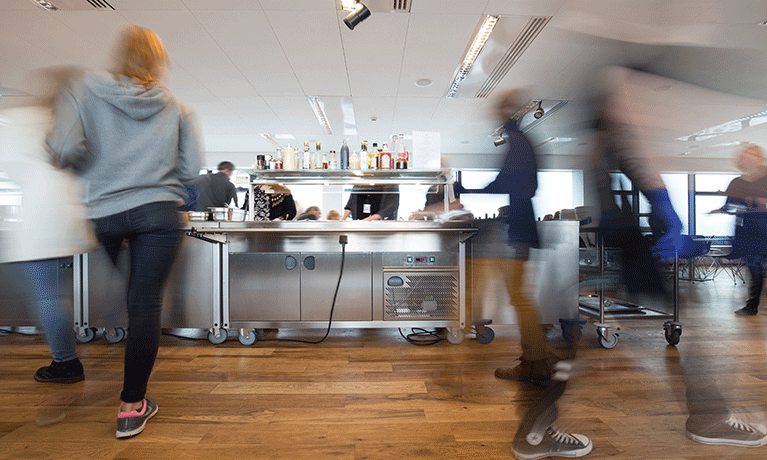By Dr Maharaj Vijay Reddy
In ‘normal times’, the worldwide aviation sector and tourism industry support 87.7 million jobs. The aviation sector alone supports 11 million jobs, including workers employed at airlines, airports, civil aerospace manufacturers and air traffic management (Air Transport Action Group, ATAG, 2020). The Covid-19 pandemic has had a catastrophic impact on the global aviation industry, the full extent of which is yet to be fully measured (Asian Development Bank, 2021; and Organisation for Economic Co-operation and Development – OECD, 2020).
The unprecedented downturn
Yet, when compared to 2019, the International Civil Aviation Organization (ICAO) estimated a reduction of about 2.7 billion passenger numbers and a USD 371 billion loss of gross passenger operating revenues for airlines for the year 2020. Globally, a few million crew and other front-line aviation staff have already lost their jobs. The European Cockpit Association’s redundancy tracker (January 2021) informs that over 18,000 pilot jobs are threatened or already permanently lost. Within Europe, many airlines have already declared job cuts and thousands more redundancies are planned in the following months. For instance, 12,000 jobs at British Airways are at risk, 22,000 at Lufthansa, 7,000 SAS, 5,000 at KLM, 3,000+ at Virgin Atlantic, 3,000 at Ryanair and 4,500 at EasyJet (ECA, 2021). In the UK, some of these employees are under the furlough scheme.
Michael Gill, the Executive Director of ATAG, commented about the grave situation the airline sector is facing and the wider impacts this can have:
“Our analysis shows that up to 4.8 million jobs in aviation may be lost by the beginning of next year (i.e, 2021), a 43 per cent reduction from pre-COVID-19 levels. When you expand those effects across all of the jobs that aviation would normally support, 46 million jobs are at risk. These include highly-skilled aviation roles, the wider tourism jobs impacted by the lack of air travel and employment throughout the supply chain in construction, catering supplies, professional services and all the other things required to run a global transport system” (ATAG, 2020).
The lockdowns had intermittent but dramatic impacts on cargo transportation as well. For instance, almost 94% of the cargo arrived at Heathrow Airport in 2019 was in the belly hold of the passenger planes. Some airlines used passenger aircraft to fly cargo only, helping to transport key essential equipment such as COVID-19 testing kits, personal protective equipment and respirators and safeguarding the supply lines has been challenging throughout the pandemic (Heathrow, 2021). However, in contrast to the fall in passenger traffic, cargo flights surged with the increased cargo‐only operations using passenger aircraft (ICAO, 2021a).
Meanwhile the plane-making companies faced unprecedented losses with Airbus announcing 15,000 jobs cuts during summer 2020. In early 2021, Boeing signalled its risk of losing one third of the contracts of the world’s largest and one of the most efficient twin-engine 777x jets (Johnson, 2021) following cancellations, production cuts and flight-testing risks in addition to competition with Airbus.
Building resilience to Covid-19

The global aviation industry has bounced back in the past from a range of crises including, 9/11 terror attacks and global economic recessions. The International Air Transport Association (IATA) have implemented a range of recommendations from ICAO and the World Health Organisation (WHO) throughout the travel process to keep passengers and crew safe during the current crisis. However, rebuilding the aviation sector is not just about airlines but also about reconnecting with the supply chain and national and international stakeholders, recruitment of tens of millions of employees who have lost their jobs, ensuring the health and safety measures for the crew and re-establishing the confidence of billions of passengers to travel.
| Box 1: IATA’s recommendations for reconnecting the aviation industry 1. Roadmaps for reconnecting Vaccinations: Most governments are pursuing a vaccination strategy to protect their health care workers and most vulnerable populations first. IATA supports re-opening borders to travel when this has been achieved, as the greatest risks will have been mitigated. Several governments have proposed that vaccinated individuals should be immediately exempted from travel restrictions and quarantine. Vaccine harmonization: A globally standardized approach is critical, particularly with regard to equivalent treatment of different vaccines and mutual recognition and acceptance of vaccination certificates. ICAO, WHO and the Collaborative Arrangement for the Prevention and Management of Public Health Events in Civil Aviation (CAPSCA) are taking the lead in this development. Testing: Many governments are implementing testing regimes to facilitate travel, which IATA supports. While rapid antigen tests are preferred for their speed and cost advantages, it is clear that Polymerase Chain Reaction (PCR) testing will play a role as many governments are requiring tests within a 48- to 72-hour window prior to travel. The OECD is laying the foundation for a global framework to help governments trust testing data based on mutual recognition of testing results. A trusted framework will ensure that travellers are not caught in the middle when governments do not recognize each other’s testing regimes. Standardizing the appropriate testing certificates is also essential. Crew: The ICAO- Council’s Aviation Recovery Task Force (CART) guidance recommends that crew be exempted from testing processes and restrictions designed for passengers. IATA supports crew health management protocols which include, for example, regular testing and health checks at home bases, along with strict guidelines limiting interaction with the local community during crew layovers. This enables airlines to manage the risks of COVID-19 while maintaining operational viability. The IATA Travel Pass: IATA is building the information infrastructure to safely re-start travel with the IATA Travel Pass. This solution will help governments, airlines and individual travellers manage vaccine or testing requirements with accurate information, secure identification and verified data. Pilot programs are underway with a growing number of partnerships. 2. Bio-safety – ensuring passenger and crew safety With strict bio-safety measures, including the wearing of masks throughout the travel process, the air travel environment is safe. Studies by Harvard, the US Department of Defence and aircraft manufacturers point to the low risk of air travel when wearing a mask. And fewer that 100 of the 50 million COVID-19 cases globally have been documented as passenger-to-passenger transmission in flight. The WHO, public health authorities, IATA, airports, manufacturers and other key stakeholders have been collaborating through ICAO to produce guidance on bio-safety measures: the ICAO CART take-off guidance. Using this guidance, IATA has produced a roadmap to implement best practices across all stages of the travel journey from pre-departure to arrival. The bio-safety measures also include: wearing face covering, contactless check-in, health screening at airports, physical distancing where possible, enhanced cleaning and disinfection processes and on-board cabin architecture including hospital-grade high-efficiency particulate air (HEPA) filters and air flow direction 3. Financial aid and cutting costs The final critical element to a safe and successful restart is continued government financial and regulatory support, regulatory alleviation and cost reduction across the value chain. The approximately $200 billion in financial support provided by governments has been a lifeline for many airlines. Significant cash burn is expected to continue well into 2021 and demand is not expected to recover to 2019 levels until at least 2024. Continued support to stabilize the industry will be needed. Critically, this must not further inflate the industry’s debt burden which has increased by over 50% to $651 billion. Airlines are drastically cutting costs but revenues continue to fall faster. This is putting more aviation jobs at risk. The industry must live within the means of drastically reduced revenues. In particular, it is imperative that airports and air navigation service providers avoid cost increases to fill gaps in budgets that are dependent on pre-crisis traffic levels. And, regulatory alleviations, including slot allocation waivers (80-20 “use it or lose it” rule), must be continued until a normalization is achieved. (Source: IATA, 2021) |
Achieving some of these recommendations from IATA will be challenging in the immediate recovery phase. International hubs such as Heathrow, have prioritised health and safety of staff members and passengers, putting in place a number of measures including ultraviolet (UV) robots, UV handrail technology, anti-viral wraps, hand sanitiser dispensers, perspex screens and the mandatory use of face masks (Heathrow, 2021). While the mass vaccination programs have started in many countries, the vaccine harmonisation and a universal process to recognition of vaccine certifications are important. There must also be improved efforts from governments to reduce aviation industry’s inflation that has increased to $651 billion. From the corporate social responsibility point of view, there must also be genuine efforts from the airline companies to bring back employment opportunities. To achieve recovery in the medium to long term, there must be efforts from the government and private sector to ensure balancing the social and mental toll caused by loss of income, lockdowns and family separations of the aviation employees.
Adaptation measures and challenges for equitable recovery
There are several useful initiatives taken by various companies to rebuild the industry. Emirates and Etihad are one of the first airlines globally to launch the IATA Travel Pass, an app that will help passengers easily and securely manage their travel in line with government requirements for COVID-19 tests or vaccines. Similarly, the Singapore Airlines group are among the first carriers in the world to operate flights with a full complement of vaccinated pilots and cabin crew.
Starting from 11 February 2021, the inoculated crew were on board flights that left from Singapore. Referring to the Singapore Airlines statement, Puckett (2021) clarified that while it’s currently only a handful of flights that are being staffed by totally vaccinated crews, over 90% of Singapore Airlines’ cabin crew and pilots have signed up to be vaccinated, with a new vaccination center in Terminal 4 of Changi International that can currently inoculate up to 2,000 people at a time. Along these lines, Emirates and Etihad have announced that all their active crew and pilots have been fully vaccinated and a massive vaccination campaign is underway for all their employees based in the UAE. Within the US, Illinois and New York have recently opened vaccination centres to airline and airport workers (Puckett, 2021). While such news are encouraging, there are also logistical and political hold-ups in many countries and new variants of the virus to tackle across the globe.
Furthermore, there are concerns of disparities in access to vaccines; an apparent challenge facing the aviation sector’s recovery in many developing countries. Ngozi Okonjo-Iweala, the Director General of the World Trade Organisation recently argued that rich countries are not doing enough to share vaccines. Princewill (2021) for CNN Business reported quoting the president of Rwanda Paul Kagame’s concerns that developing countries are unable to access adequate vaccine supplies, which leaves them either far behind in the vaccine queue, or not in it at all.
These broader international diplomacy and politics related questions the world is facing now, can considerably delay the practical and equitable recovery of the aviation sector globally. While approving the German government plans to contribute €6 billion to the recapitalisation of Lufthansa, the European Commission (2020) cautioned about “a domino effect of government support to protect the competitiveness of their national public and private airlines can be expected, leading to imbalances in air transport connectivity internationally”. This will allow the wealthier nations to strengthen their international connectivity sooner than developing countries. Nevertheless, the fast developing countries including India, China and Russia have made remarkable progress in improving their aviation sectors’ resilience to the pandemic while logistically strengthening their vaccination production capability and mass vaccination programmes for their population, aviation employees besides helping other countries. For instance, India’s Bengaluru Kempegowda International Airport opened up rapid PCR testing facilities, giving confirmatory results in 30 minutes for passengers.
Aviation recovery and sustainable future
There are long standing environmental transition concerns and sustainability questions facing the aviation sector whilst rebuilding from the catastrophic pandemic, coordinating the implementation of vaccination measures and ensuring the safety, security and efficiency of passengers worldwide. The expectations for the recovery of the sector is to accelerate in its path to net-zero aviation and meeting its challenging position in contributing to the Sustainable Development Goals. Fang Liu, the Secretary General of the ICAO (see ICAO, 2021b), highlighted at the 2021 World Economic Forum that the transition towards post-COVID period is providing aviation with a tremendous opportunity to accelerate the transition toward a decarbonised future.
Nevertheless, considering the near total shutdown of the sector for almost a year as well as the stop and start nature of the reopening, ATAG (2020) forecasted that air travel will not fully recover to pre-Covid levels until around 2024.
Sources:
- Asian Development Bank (2021) Impact of Covid-19 on CAREC Aviation and Tourism. Manila: Asian Development Bank. 16 February 2021, accessed at: https://www.adb.org/sites/default/files/publication/674106/impact-covid-19-carec-aviation-tourism.pdf
- Air Transport Action Group (ATAG) (2020) Press Release: Up to 40 million jobs at risk due to Covid-19 Aviation downturn. Geneva: ATAG. 15 February 2021, Accessed at: https://www.atag.org/component/news/?view=pressrelease&id=122
- European Cockpit Association – ECA (2021) Redundancy Tracker: European pilots loosing their Jobs. https://www.eurocockpit.be/news/redundancy-tracker-european-pilots-losing-their-jobs (Accessed on 16.02.2021).
- European Commission (2020). EU Science Hub: Can a more sustainable aviation sector emerge from the pandemic? 15 February 2021, Accessed at: https://ec.europa.eu/jrc/en/news/can-more-sustainable-aviation-sector-emerge-pandemic
- Heathrow (2021) Latest News: In 2020, 22.1 million passengers travelled through the UK’s only hub airport, down 72.7%. Lockdowns and border closures led to a loss of 58.8 million passengers. https://www.heathrow.com/latest-news/restart-aviation-for-global-britain Accessed on 17.02.2021).
- International Airport Review (2020) COVID-19 pandemic to result in loss of up to 46 million jobs supported by aviation. 15th February 2021, Accessed at: https://www.internationalairportreview.com/news/138409/covid-19-pandemic-loss-46-million-jobs-aviation/.
- International Air Transport Association – IATA(2021)Reconnecting the World. 14 February 2021, Accessed at: https://www.iata.org/en/programs/covid-19-resources-guidelines/reconnecting-the-world/
- International Civil Aviation Organisation – ICAO (2021a) Effects of Novel Coronavirus (COVID‐19) on Civil Aviation: Economic Impact Analysis. Montreal: ICAO Air Transport Bureau.
- ICAO (2021b). ICAO SG highlights aviation’s green transition at Davos. 18 February 2021, Accessed at: https://www.icao.int/Newsroom/Pages/ICAO-SG-highlights-aviations-green-transition-at-Davos.aspx
- Johnson, J (2021) Bloomberg Business: Boeing Risks Losing a Third of 777X Orders on Jet’s Latest Delay. 18 February 2021, Accessed at: https://www.bloomberg.com/news/articles/2021-02-01/boeing-risks-losing-a-third-of-777x-orders-on-jet-s-latest-delay
- Organisation for Economic Co-operation and Development – OECD (2020). COVID-19 and the aviation industry: Impact and policy responses. 22 December 2020, Accessed at: https://read.oecd-ilibrary.org/view/?ref=137_137248-fyhl0sbu89&title=COVID-19-and-the-aviation-industry
- Princewill, N (2021) CNN Business: First Black woman to lead WTO says she will prioritize fair trade, access to Covid-19 vaccines. 17 February 2021, accessed at: https://edition.cnn.com/2021/02/15/business/ngozi-okonjo-iweala-wto-announcement-intl/index.html
- Puckett, J (2021) Air Travel: Singapore Airlines Is Operating Flights With Completely Vaccinated Crews. 16 February 2021, Accessed at: https://www.cntraveler.com/story/singapore-airlines-is-operating-flights-with-completely-vaccinated-crews




Comments are disabled